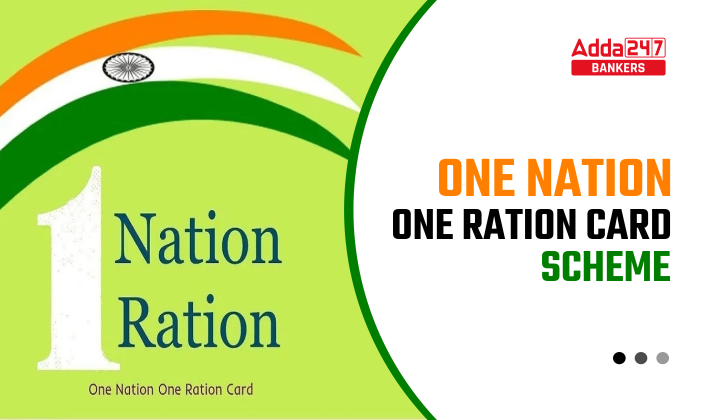One Nation One Ration Card (ONORC) is a technology-driven scheme which is being
implemented by the Central Government for the nationwide portability of ration cards under
the National Food Security Act (NFSA).
It is to address the difficulties of migrants, this system for intra-State and inter-State portability of ration cards was launched by the Government of India on August 09, 2019.
At present, ONORC is effectively implemented in all 36 States and Union Territories,
making food security portable throughout the country, with Assam becoming the last state to
have it implemented.
It is under Ministry of Consumer affairs, Food and Public distribution.
Key Features of ONORC
❖ ONORC uses Information & Communication Technology to implement ‘Right to Food’ with the concept of 5R’si.e. Right Quantity and Right Quality to Right Beneficiary at Right Time at Right Fair Price.
❖ ONORC had become an integral part of “Pradhan Mantri Garib Kalyan Anna Yojana” to distribute free commodities to migrants during Covid-19.
❖ Key components are National Portability, de-duplication of beneficiaries, creation of ration card-Central Repository and Data analytics.
Progress of ‘One Nation One Ration Card’ (As on August 02, 2022)
❖80 Crore beneficiaries avail benefit of ONORC, recording nearly three crore portability
transactions per month.
❖ The Department of Food and Public Distribution (DFPD) received the Prime Minister’s
Award for Excellence in Public Administration, 2020 for the ‘One Nation One Ration
Card’ scheme.
❖A specially customized Android Mobile App on ONORC “Mera Ration” has also been launched for the benefit of all NFSA beneficiaries. The application provides multiple functionalities and makes portability of ration easier, specifically for migrant NFSA beneficiaries. The application is now available in 13 languages.
❖ To make the beneficiary aware of the benefits of the ONORC, a vigorous awareness generation campaigning – in Hindi & Regional Languages has been carried out.
❖ A 5-digit ‘14445’ toll-free number is also available in most States/UTs under ONORC.
National Food Security Act (NFSA), 2013
- This act was notified on 10th September, 2013.
- Its objective is to provide for food and nutritional security in the human life cycle approach, by ensuring access to adequate quantities of quality food at affordable prices to people to live a life with dignity.
- Coverage: 75% of the rural population and upto 50% of the urban population for receiving subsidized foodgrains under Targeted Public Distribution System (TPDS).Overall, NFSA caters to 67% of the total population.
- Eligibility:
- Priority Households to be covered under TPDS, according to guidelines by the State government.
- Households covered under existing Antyodaya Anna Yojana.
- Provisions:
- 5 Kgs of foodgrains per person per month at Rs. 3/2/1 per Kg for rice/wheat/coarse grains.
- The existing AAY household will continue to receive 35 Kgs of foodgrains per household per month.
- Meal and maternity benefit of not less than Rs. 6,000 to pregnant women and lactating mothers during pregnancy and six months after the child birth.
- Meals for children upto 14 years of age.
- Food security allowance to beneficiaries in case of non-supply of entitled foodgrains or meals.
- Setting up of grievance redressal mechanisms at the district and state level.
1st edition of ‘State Ranking Index for NFSA’ . released on 5 July 2022
- Odisha has been adjudged the top ranked State followed by Uttar Pradesh at the 2nd spot and Andhra Pradesh at third amongst the General Category States in ‘State Ranking Index for NFSA’.
- Among the Special Category states/UTs, Tripura stood first followed by Himachal Pradesh and Sikkim respectively.
- Further, among the 3 UTs where Direct Benefit Transfer (DBT)- Cash is operational, Dadra and Nagar Haveli & Daman and Diu is the top ranked UT.
Other Schemes:
- Pradhan Mantri TB Mukt Bharat Abhiyaan
- Startup India Seed Fund Scheme
- Shyama Prasad Mukherji Rurban Mission
- PM Schools for Rising India: PM SHRI



 GA Capsule for SBI Clerk Mains 2025, Dow...
GA Capsule for SBI Clerk Mains 2025, Dow...
 The Hindu Review October 2022: Download ...
The Hindu Review October 2022: Download ...
 IB ACIO 2025 Notification PDF Out for 37...
IB ACIO 2025 Notification PDF Out for 37...


